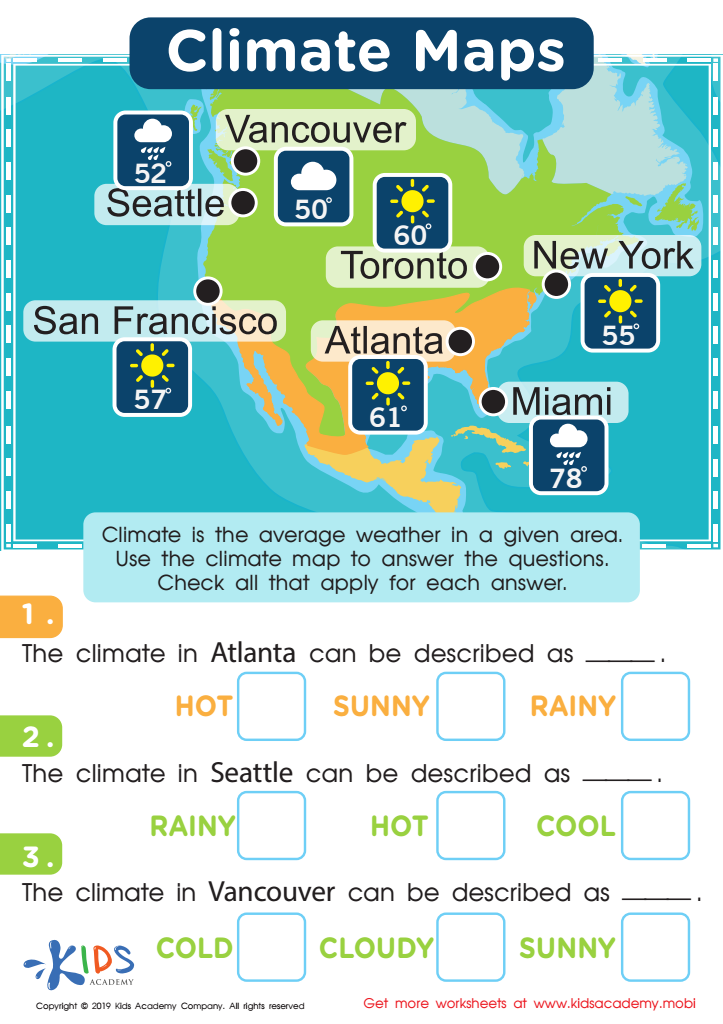Understanding climates Worksheets for Kids
1 filtered results
-
From - To


Climate Maps Worksheet
Question/Answer
How does the mastery of the Understanding climates skill affect a student's performance at an early age?
Mastery of the Understanding climates skill at an early age significantly enhances a student's geographical awareness, environmental science comprehension, and interdisciplinary learning. It fosters critical thinking about weather patterns, climate change, and sustainability, enabling students to make informed decisions and cultivate a sense of global responsibility.
What does the Understanding climates skill mean when it comes to Grade 3 Our Planet and Environment learning?
The "Understanding climates" skill in the context of Grade 3 Our Planet and Environment learning refers to teaching students about different climate zones around the world.
How to test a Grade 3 student’s Understanding climates skills?
To assess a Grade 3 student's understanding of climates, use a combination of methods including quizzes with questions on climate types, characteristics, and examples; interactive activities like matching climates to regions on a map; and hands-on projects where students create posters or presentations on a specific climate, demonstrating their knowledge of its features, weather patterns, and how it affects the environment and human activities.#$%
 Assign to the classroom
Assign to the classroom











